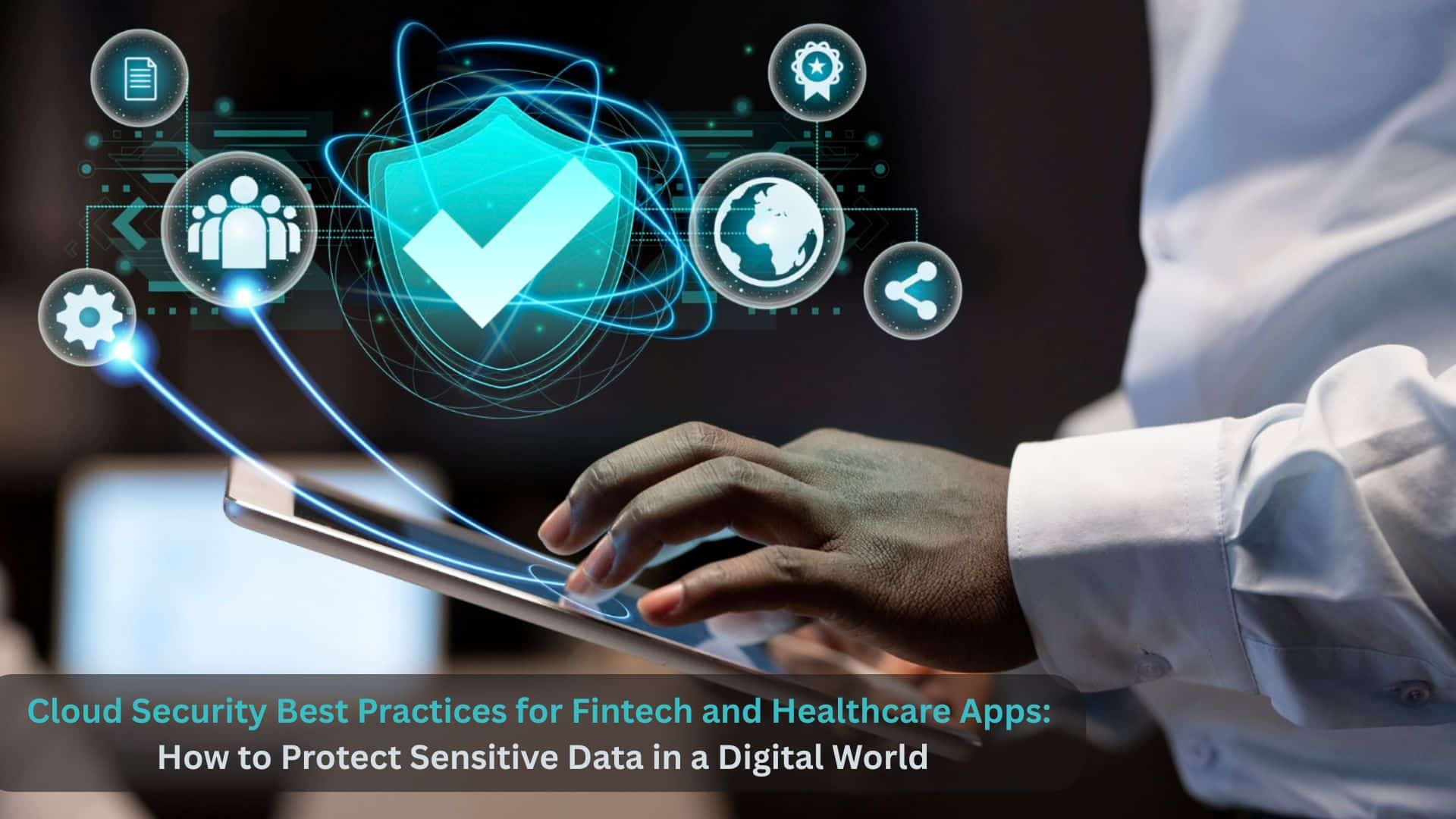In today’s hyper-connected world, cloud-based apps have become the backbone of fintech and healthcare industries. But with great power comes greater responsibility – especially when it comes to security.
Fintech and healthcare apps deal with incredibly sensitive data—from banking credentials and investment portfolios to medical records and patient histories. A single breach can lead to severe financial losses, legal consequences, and permanent damage to your brand’s trust. That’s why implementing strong cloud security practices is not just a recommendation – it’s a must.
At MAKEWAYS TECHWORKS, we’ve developed, secured, and scaled numerous cloud applications for clients in both fintech and healthcare. In this blog, we’re sharing our tried-and-tested best practices to help companies like yours keep cloud-hosted data safe, compliant, and future-ready.
Topic 1: Understand the Sensitivity of Your Data
Before implementing security strategies, it’s important to understand what kind of data your app handles and how sensitive it is. Not all data is equal, and identifying high-risk information allows you to prioritize your security layers.
-
Classify Data: Segment data into levels of sensitivity—public, internal, confidential, and restricted.
-
Regulatory Requirements: Fintech apps must comply with regulations like PCI DSS, while healthcare apps are governed by HIPAA, GDPR, etc.
-
Risk Assessment: Regularly audit your data to uncover vulnerabilities and high-risk points in data flow and storage.
Topic 2: Secure Cloud Infrastructure and Configuration
Many breaches occur not because of the cloud platform itself, but due to misconfigured settings and weak access controls.
-
Use Trusted Cloud Providers: Opt for established providers like AWS, Google Cloud, or Azure, which offer robust built-in security tools.
-
Implement IAM (Identity & Access Management): Restrict access using roles and permissions. Use least privilege principles.
-
Enable Logging and Monitoring: Constantly track system activity for unusual behavior or unauthorized access attempts.
Example:
We helped a fintech startup secure its AWS infrastructure by configuring IAM roles properly, eliminating exposed admin-level access, and enabling detailed CloudTrail logging. The result: a 40% drop in risk exposure within 30 days.
Topic 3: Encrypt Everything – In Transit and At Rest
Encryption is your first line of defense against unauthorized data access.
-
Encryption in Transit: Use TLS/SSL protocols for secure communication between users and servers.
-
Encryption at Rest: Ensure that all stored data, including backups and archives, are encrypted using strong algorithms (like AES-256).
-
Key Management: Use hardware security modules (HSMs) or managed key services to store and rotate encryption keys safely.
Topic 4: Regular Penetration Testing and Vulnerability Scanning
Security isn’t a “set-it-and-forget-it” process. It’s an ongoing battle.
-
Penetration Testing: Simulate real-world cyberattacks to uncover potential weaknesses.
-
Automated Vulnerability Scanning: Use tools to continuously scan for outdated software, insecure libraries, and misconfigurations.
-
Patch Management: Apply security patches and updates as soon as they are available.
Example:
One of our healthcare clients reduced their critical vulnerabilities by 72% within two months after we set up automated weekly vulnerability scans and quarterly manual pentests.
Topic 5: Implement Multi-Factor Authentication (MFA) and Secure Access Controls
Access control is often the weakest link in any security chain. You must go beyond just passwords.
-
MFA for All Users: Whether it’s patients, doctors, admins, or bankers—add an extra layer of verification.
-
Session Timeouts: Automatically log out users after periods of inactivity.
-
Geofencing and IP Whitelisting: Restrict access to specific locations or networks for high-level admin users.
Topic 6: Ensure Compliance and Prepare for Audits
For both fintech and healthcare, compliance is not optional—it’s enforced by law.
-
HIPAA, PCI DSS, GDPR: Ensure your app is built with all legal requirements in mind.
-
Maintain Audit Trails: Log all user and system activities for easy reporting and compliance audits.
-
Regular Documentation: Keep policies, configurations, and processes documented and updated.
Topic 7: Train Your Team and Users
Human error causes nearly 90% of data breaches. Even the best tech won’t help if your people aren’t aware.
-
Employee Training: Conduct regular security training sessions on phishing, secure login practices, and handling sensitive data.
-
User Awareness: Offer in-app alerts and tips for end users to secure their own data – like choosing strong passwords and enabling MFA.
-
Incident Response Protocols: Make sure your team knows what to do in case of a breach or suspicious activity.
Final Thoughts
Securing fintech and healthcare apps is about proactively defending your systems, your users, and your reputation. Cloud security is not a luxury—it’s a fundamental necessity.
At MAKEWAYS TECHWORKS, we specialize in secure cloud-native app development, infrastructure management, and compliance-focused architecture for high-risk industries like fintech and healthcare. Our tailored solutions not only meet industry standards—they help you stay ahead of threats.
Let’s Talk Security
If you’re building or scaling a fintech or healthcare app, let us secure it for you from the ground up.
🌐 Website: www.makewaystech.com 📧 Reach out to us at: [email protected]
Let’s build something powerful and protected.
#cloudsecurity #fintechsecurity #healthcareapps #dataprotection #appsecurity #cybersecuritytips #secureapps #cloudarchitecture #hipaacompliance #pcidss #mobileappdevelopment #webappsecurity #makewaystechnologies #makewaystechworks #techforgood #cloudbasedapps
